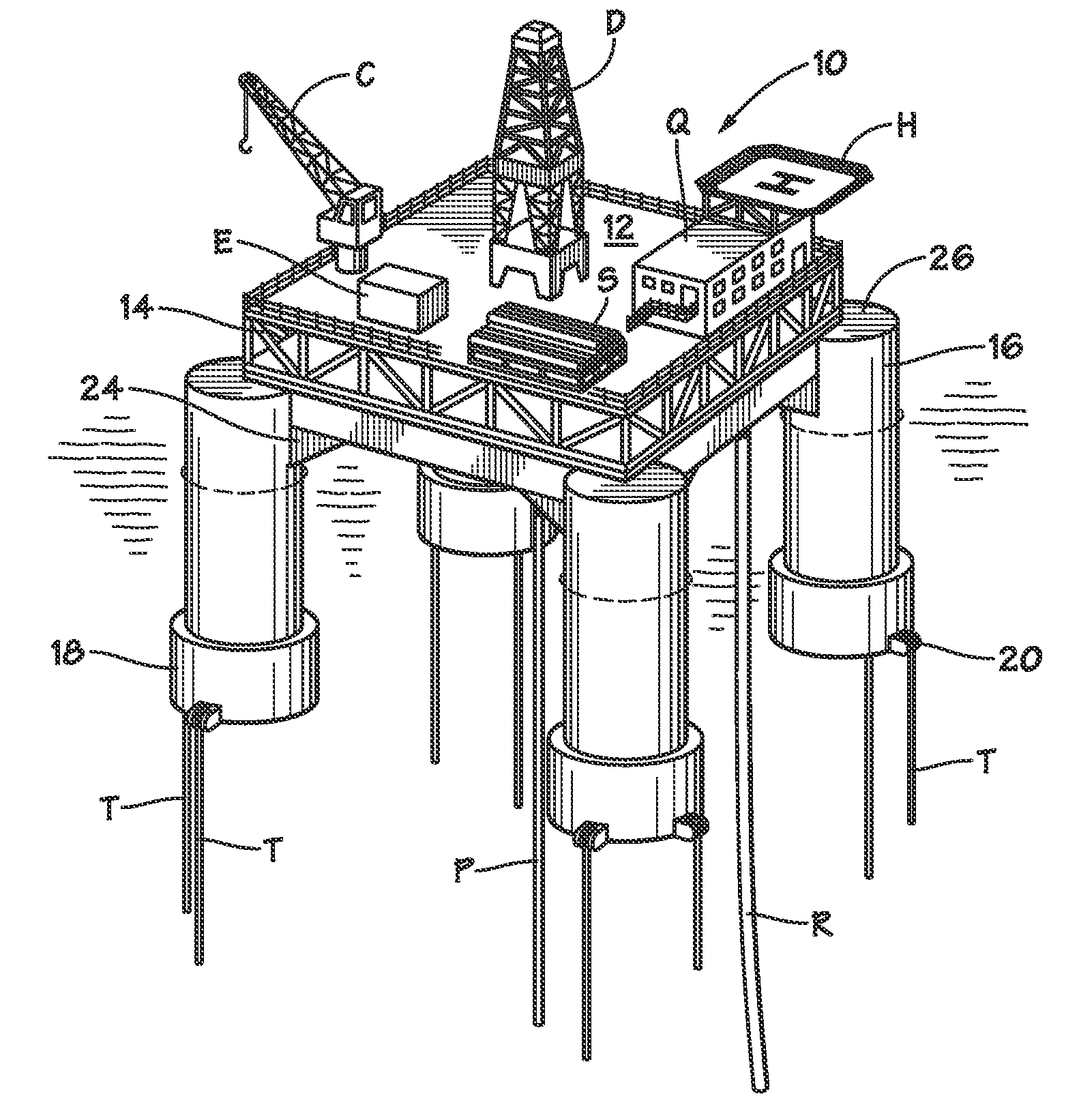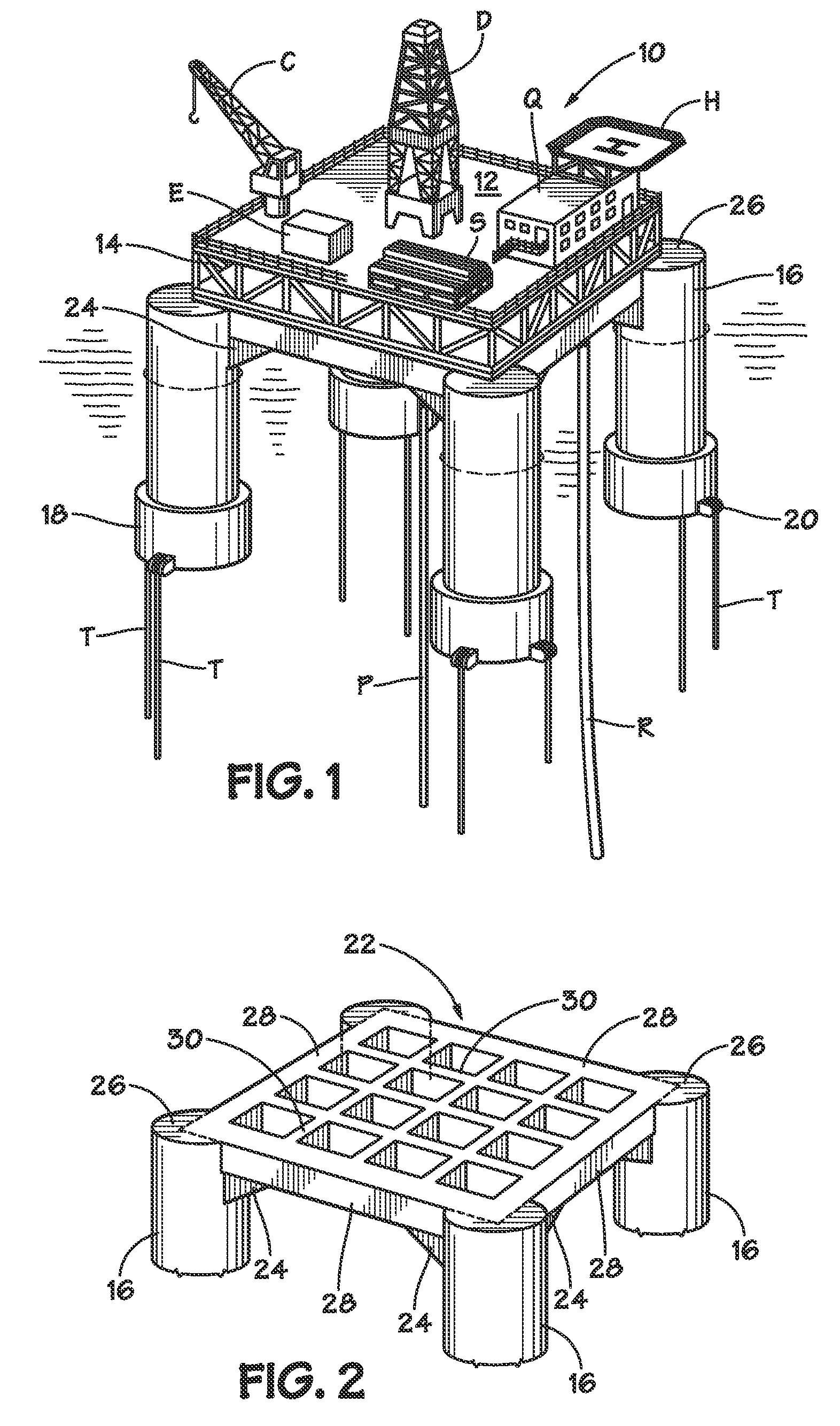Pontoonless tension leg platform
a technology of tension leg and platform, which is applied in the direction of special-purpose vessels, vessel construction, transportation and packaging, etc., to achieve the effect of increasing the buoyancy of columns and increasing the diameter (and/or cross-sectional area)
- Summary
- Abstract
- Description
- Claims
- Application Information
AI Technical Summary
Benefits of technology
Problems solved by technology
Method used
Image
Examples
first embodiment
[0038]The invention may best be understood by reference to certain illustrative embodiments. FIG. 1 depicts a TLP 10 according to the invention installed at an offshore location. As is conventional for tension leg platforms, the buoyant hull of the vessel (comprised of columns 16) is anchored to the seafloor by tendons T which are tensioned to hold the vessel such that the waterline in its installed condition is above that of its free-floating state. This arrangement eliminates most vertical movement of the structure.
[0039]TLP 10 comprises a deck 12 which may be configured to suit the particular needs of the owner or operator. A typical deck layout for a drilling operation is shown in FIG. 1 and includes derrick D, helicopter landing facility H, crew quarters Q, loading crane C, equipment E and supplies S. Catenary risers R and vertical risers P may be supported by the TLP from deck 12.
[0040]Framework 14 allows deck 12 to be a separate, detachable unit thereby facilitating both fabr...
third embodiment
[0048]FIG. 4 illustrates the invention wherein deck support structure 22″ is comprised of an open truss framework. Perimeter members 34 connect adjacent columns 16 and may support the perimeter of deck 12. Generally orthogonal interior trusses 36 connect opposing perimeter members 34 and provide interior support for deck 12. The trusses may be constructed from flanged members including Z-Shape (half a flange in opposite directions), HSS-Shape (hollow structural section also known as SHS (structural hollow section) and including square, rectangular, circular (pipe) and elliptical cross-sections), angle (L-shaped cross-section), channel (C-shaped cross-section), tee (T-shaped cross-section), or any other configuration having the requisite structural properties.
[0049]In the embodiment illustrated in FIG. 4, deck support structure 22″ is comprised of parallel chord or “flat” trusses. Many flat truss designs are known in the art. Examples include the Pratt configuration, the Warren confi...
PUM
 Login to View More
Login to View More Abstract
Description
Claims
Application Information
 Login to View More
Login to View More - R&D
- Intellectual Property
- Life Sciences
- Materials
- Tech Scout
- Unparalleled Data Quality
- Higher Quality Content
- 60% Fewer Hallucinations
Browse by: Latest US Patents, China's latest patents, Technical Efficacy Thesaurus, Application Domain, Technology Topic, Popular Technical Reports.
© 2025 PatSnap. All rights reserved.Legal|Privacy policy|Modern Slavery Act Transparency Statement|Sitemap|About US| Contact US: help@patsnap.com



